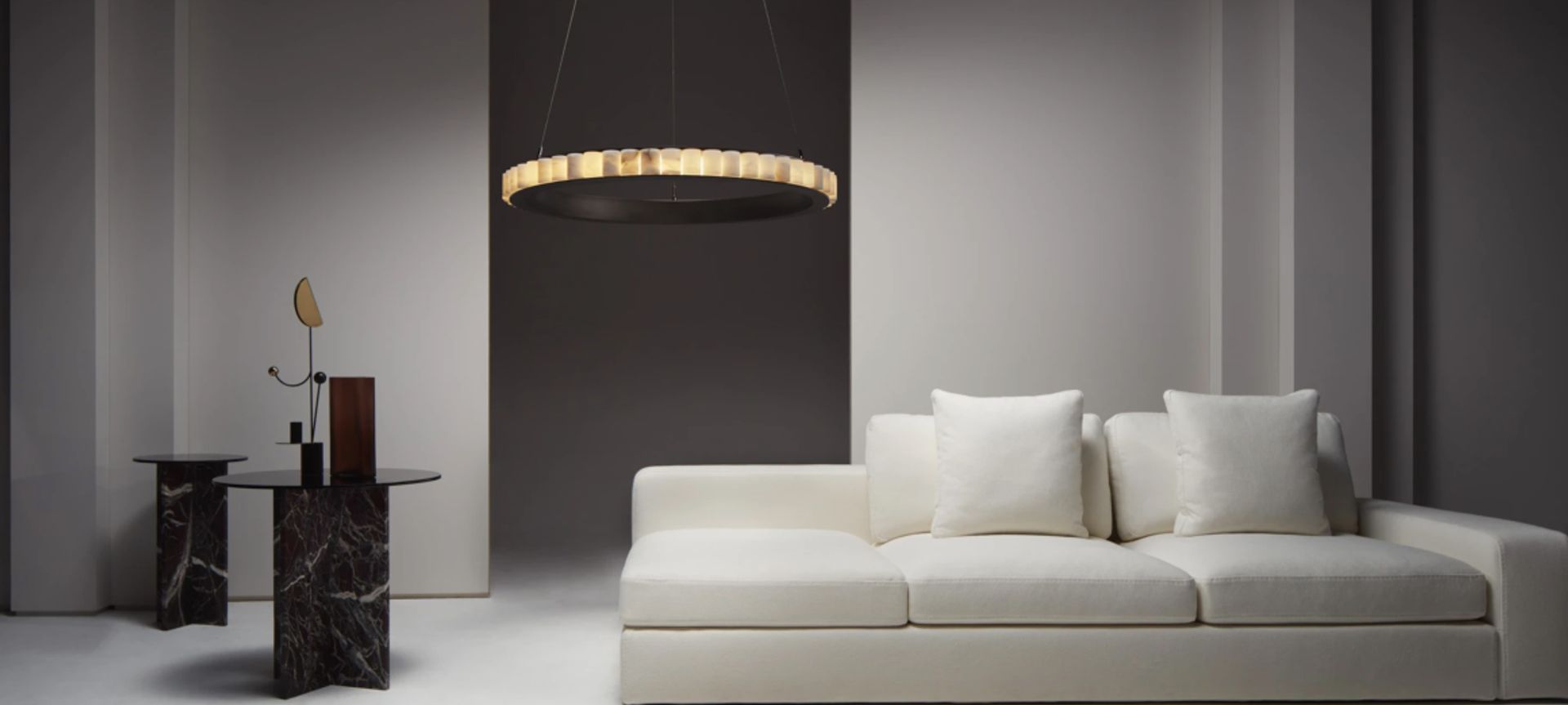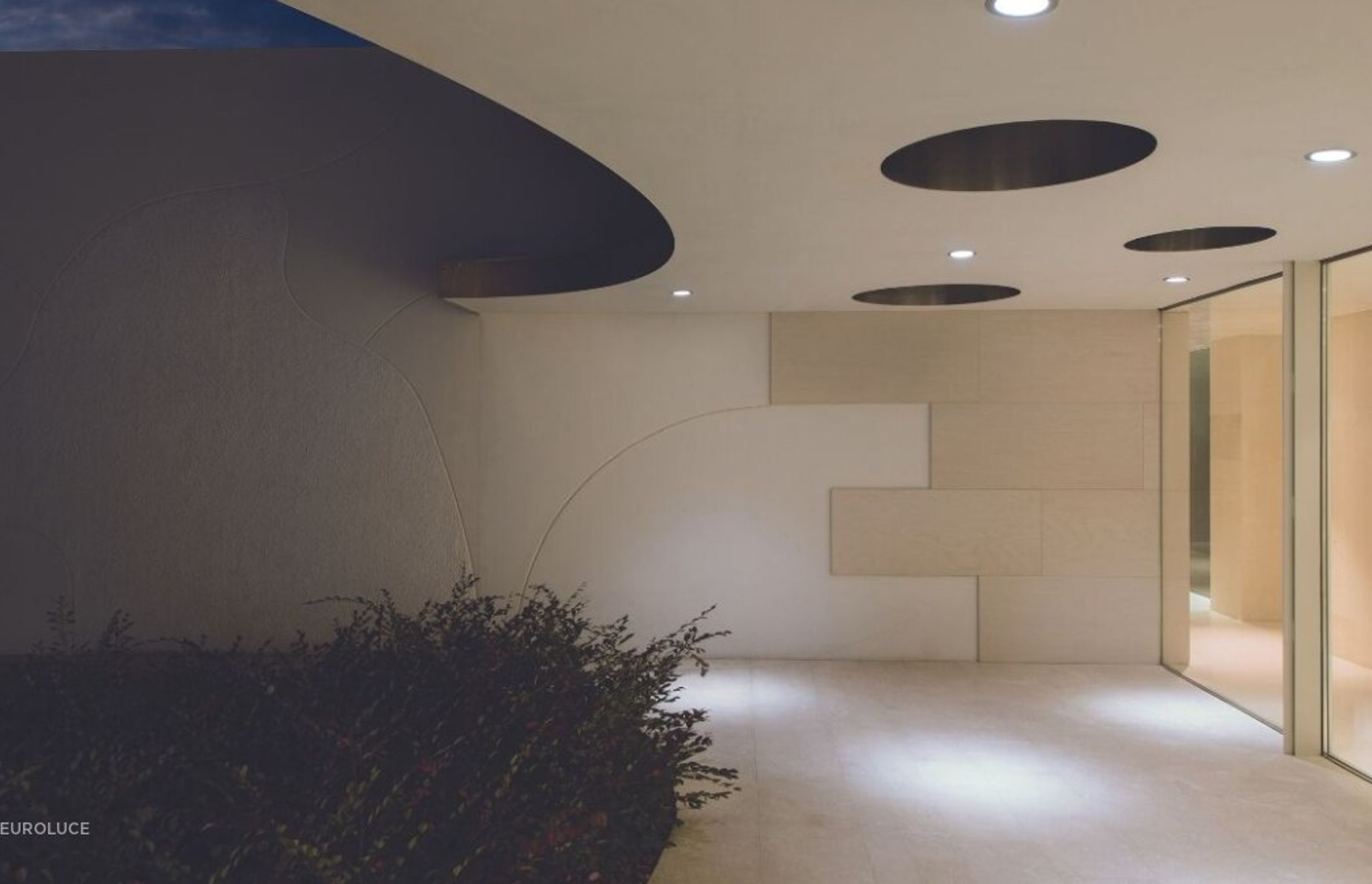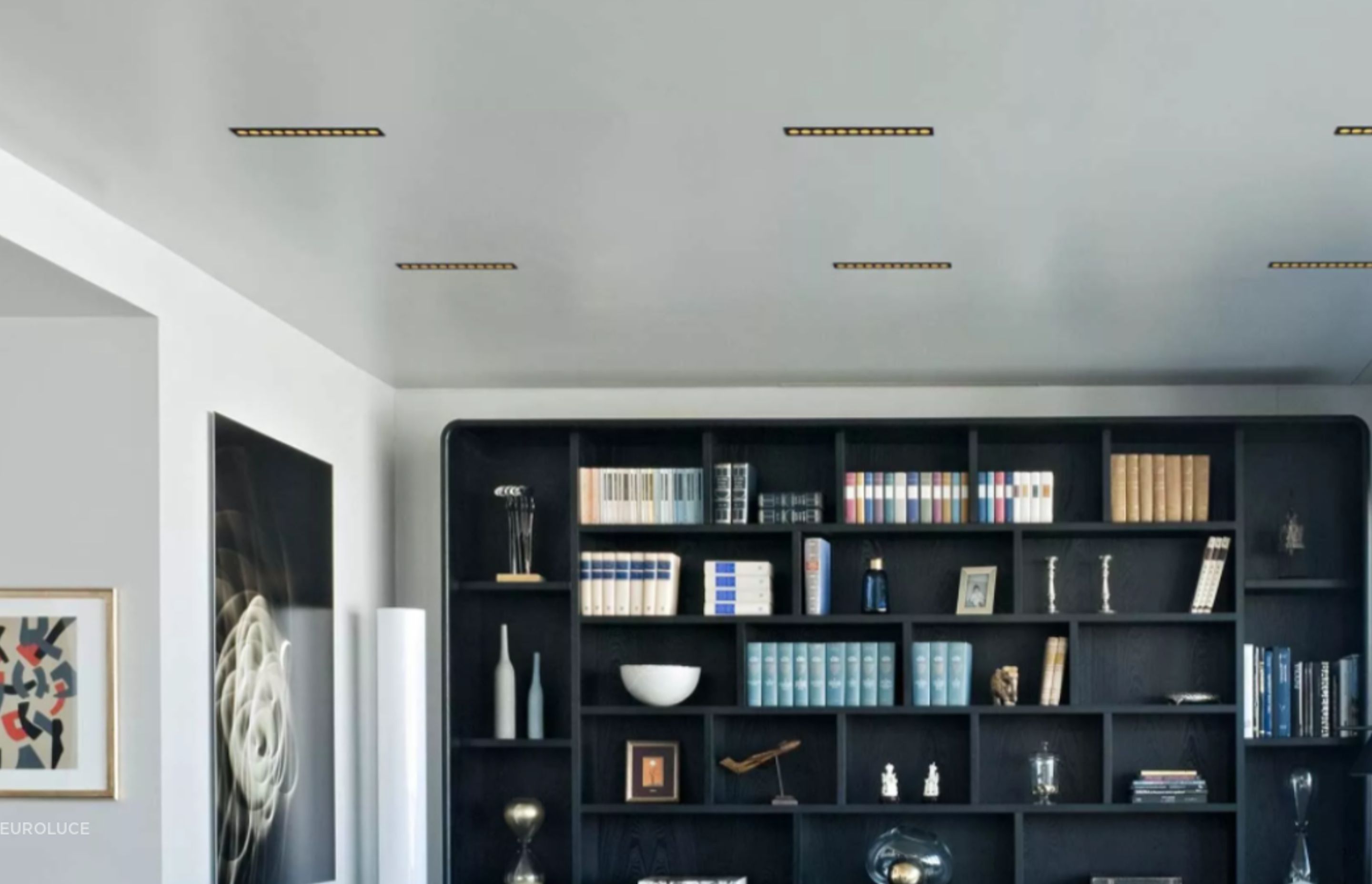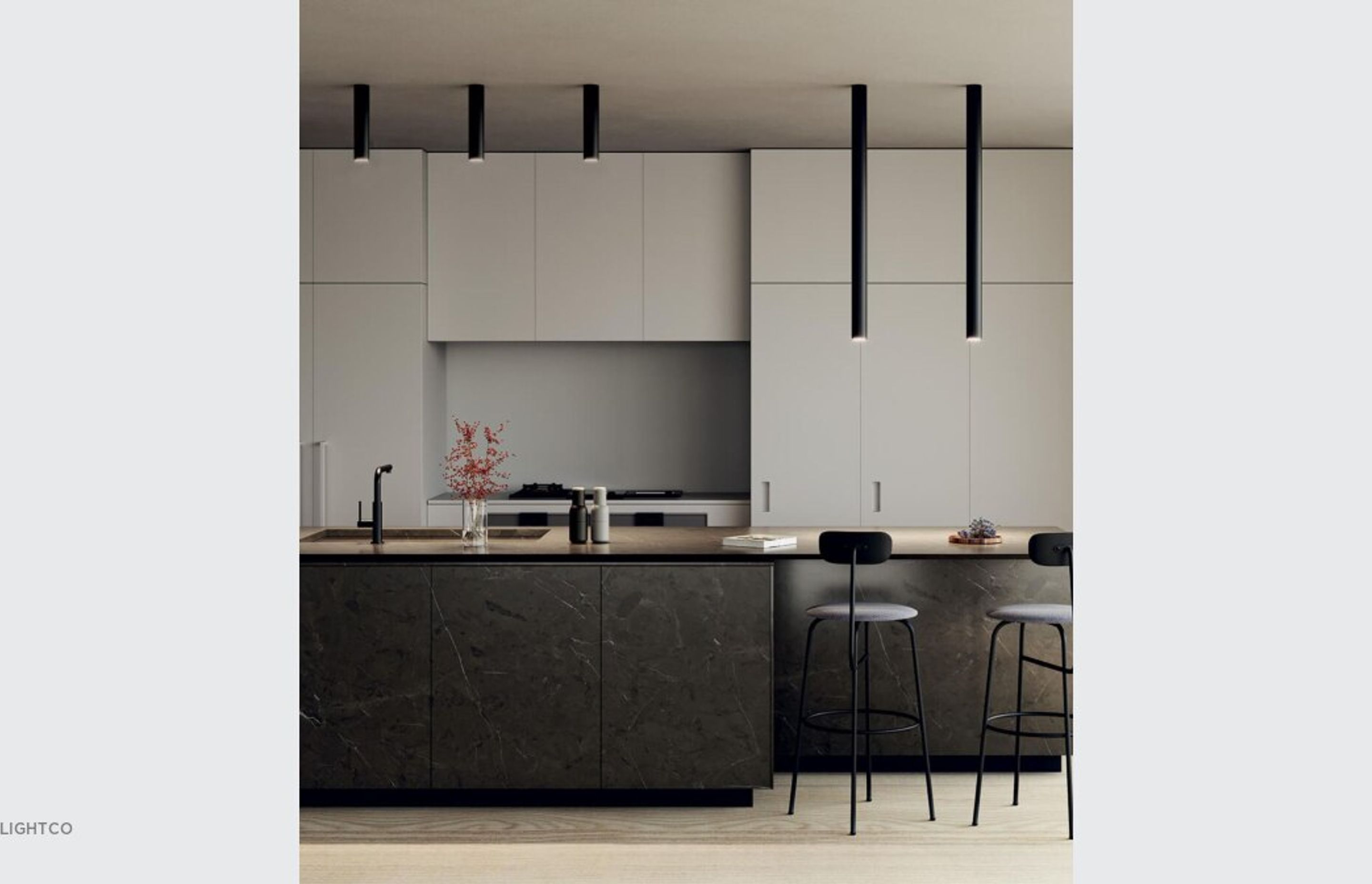Downlights: The essentials

Having spent a lot more time in our homes in recent years, you may have noticed that some parts of your house could do with a little more illumination. If you want to create more light without drawing attention to a feature light fitting, then adding downlights can be a great solution.
However, there are a few key tips and tricks for using LED downlights correctly. We’ve created this guide to explain exactly how they should be used and the benefits they’ll bring.

What are LED downlights?
Downlights, also called recessed lights, are light fixtures designed to illuminate one specific item or area. They’re characterised by a narrow beam of light and are recessed into the ceiling, eliminating the need for an external light fixture on the surface. In some cases, they’ve even been used as replacements for table lamps.
Downlights are often used as spotlights or used in areas where you need an additional amount of light for task illumination. They’re one of the most popular types of ceiling lights in kitchens as a way to light up countertops and work surfaces. They’re also great for general ambient lighting in larger rooms.
Related article - LED lights - the definitive guide - FAQs, costs & more
Important downlight layout considerations
The first thing you need to do is figure out the layout of your downlights. Decide which lights will illuminate the whole space and which lights will be used as a light source for tasks.
How many downlights do you need per room?
To calculate how many downlights are needed, measure the width and length of your room to get the total area. Then multiply the area of your room by 25 to get the overall wattage needed for your space.
Once you’ve chosen which downlights you’ll use, divide the wattage between the fixtures to know how many you will require to get the right amount of illumination in the space.
With respect to downlight spacing for general lighting, place them about two feet away from the walls and about half your ceiling height apart from each other. Then add task lighting anywhere in the room where it’s required. Consider where the shadows may fall in the room, using higher wattage bulbs for tall ceilings.

Colour temperature characteristics
The colour temperature you select will depend on your preference for the look and feel of your space. You might choose a 6000K cool blue for a sun-flooded space or a 4000K cool white light, frequently used in home offices. Alternatively, you may select a 3000K warm white to make a space appear warmer and cosier, often considered the best downlights for living rooms.
There’s no right or wrong choice when it comes to choosing colour temperature as the overall feel is a personal preference so be sure to pick the ones that look and feel right for you.
What’s the best beam angle for downlights?
A bulb on a hanging pendant with no lampshade has a beam angle of 360 degrees. The recessed nature of downlights means most only have a beam angle of around 45 degrees. If you’re wanting to get a bit more light output from your downlights you’ll be able to find some with a slightly wider beam angle of around 60 degrees.
There are also downlights with narrow 25 degree beams which are perfect for spotlighting onto a kitchen bench, creating a more concentrated beam of light.
Common mistakes to avoid
There are a few things you should watch out for before choosing downlights. Firstly, people sometimes rely on them too heavily, especially when lighting large open plan spaces. In this type of room, you need ambient, task and accent lighting. Downlighting is suited to the first two of these but needs to be applied in different ways, with different sized fittings.
People also attempt to solve lighting problems by filling the ceiling with downlights or increasing the wattage. When done to excess, it can make a space feel overblown with light and stark. You’re much better off using downlights in appropriate spaces while keeping the wattage low, layering your light with other lighting fixtures in the space.
Dimmers are also an excellent option for downlights, giving you the flexibility to change the levels of brightness throughout the day.
Ceiling insulation and downlights
Not all downlights are created equal and when it comes to safety, one needs to take the utmost care. The best LED downlights are Insulation Contact (IC) and Insulation Contact - Fire Resistant (IC-F) rated which means they are suitable to come into close contact with ceiling insulation.
Older versions required significant gaps with some not even allowed to come into contact with insulation at all. This is because the heat from halogen and incandescent light fittings is such that it poses significant fire risks.
Big holes that need to be cut into ceiling insulation make the insulation itself inefficient as warm air and moisture from the room below are drawn up into the ceiling cavity.
Fortunately, new technology in IC and IC-F fittings means the heat output of downlights is reduced dramatically and the light cans can either be in contact with insulation or require only a small gap.
Just be aware, IC-F downlights are not necessarily fire-rated, so check with the manufacturer first if you need fire-rated lights.
Related article - The ultimate guide to ceiling lights

Dimmers and downlights
Dimmers were initially introduced to reduce the power usage of incandescent bulbs, but with the advent of LED, that is no longer a primary reason for installing them.
Now they have both stylistic and aesthetic functions with the ability to reduce the intensity of light in a room, allowing homeowners to easily control the mood of their space.
Dimmers are available in analogue and digital options, but they need to be paired with dimmable bulbs. There are dimmable versions available for most types of LED downlights. Non-dimmable bulbs can still be used in dimmable light fittings, but they will only turn on when 100% voltage is applied.
Stylise your rooms with LED downlights
As you can see, there are a number of important things to consider before installing downlights but some great benefits to be had when executed well. Downlights are highly functional lights that look great and can really lift a room so be sure to do your preparation to get the best results.
